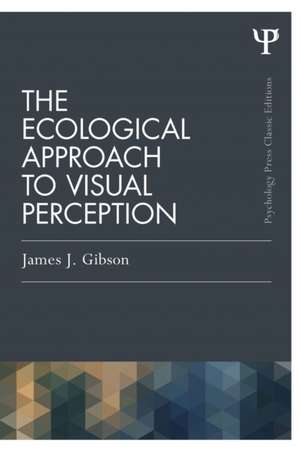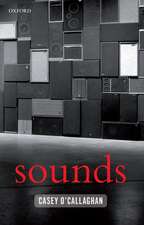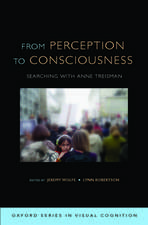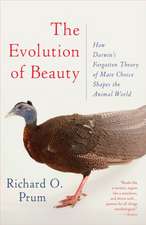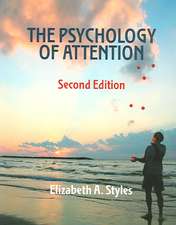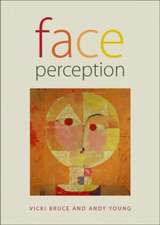The Ecological Approach to Visual Perception: Classic Edition: Psychology Press & Routledge Classic Editions
Autor James J. Gibsonen Limba Engleză Paperback – 20 noi 2014
| Toate formatele și edițiile | Preț | Express |
|---|---|---|
| Paperback (1) | 473.76 lei 3-5 săpt. | +21.01 lei 4-10 zile |
| Taylor & Francis – 20 noi 2014 | 473.76 lei 3-5 săpt. | +21.01 lei 4-10 zile |
| Hardback (1) | 1012.34 lei 6-8 săpt. | |
| Taylor & Francis – 4 dec 2014 | 1012.34 lei 6-8 săpt. |
Din seria Psychology Press & Routledge Classic Editions
-
 Preț: 387.27 lei
Preț: 387.27 lei -
 Preț: 340.65 lei
Preț: 340.65 lei -
 Preț: 340.14 lei
Preț: 340.14 lei -
 Preț: 356.64 lei
Preț: 356.64 lei -
 Preț: 310.56 lei
Preț: 310.56 lei -
 Preț: 327.83 lei
Preț: 327.83 lei - 8%
 Preț: 383.44 lei
Preț: 383.44 lei -
 Preț: 310.95 lei
Preț: 310.95 lei -
 Preț: 375.99 lei
Preț: 375.99 lei -
 Preț: 302.94 lei
Preț: 302.94 lei -
 Preț: 447.51 lei
Preț: 447.51 lei -
 Preț: 440.38 lei
Preț: 440.38 lei - 8%
 Preț: 418.46 lei
Preț: 418.46 lei -
 Preț: 447.72 lei
Preț: 447.72 lei -
 Preț: 370.28 lei
Preț: 370.28 lei -
 Preț: 487.96 lei
Preț: 487.96 lei - 15%
 Preț: 689.28 lei
Preț: 689.28 lei -
 Preț: 496.01 lei
Preț: 496.01 lei -
 Preț: 468.36 lei
Preț: 468.36 lei - 26%
 Preț: 817.87 lei
Preț: 817.87 lei - 5%
 Preț: 449.45 lei
Preț: 449.45 lei -
 Preț: 411.76 lei
Preț: 411.76 lei -
 Preț: 440.21 lei
Preț: 440.21 lei -
 Preț: 500.46 lei
Preț: 500.46 lei - 18%
 Preț: 1005.80 lei
Preț: 1005.80 lei -
 Preț: 471.25 lei
Preț: 471.25 lei - 25%
 Preț: 993.44 lei
Preț: 993.44 lei -
 Preț: 489.26 lei
Preț: 489.26 lei -
 Preț: 451.97 lei
Preț: 451.97 lei - 18%
 Preț: 1279.65 lei
Preț: 1279.65 lei
Preț: 473.76 lei
Preț vechi: 514.95 lei
-8% Nou
Puncte Express: 711
Preț estimativ în valută:
90.68€ • 98.53$ • 76.22£
90.68€ • 98.53$ • 76.22£
Carte disponibilă
Livrare economică 01-15 aprilie
Livrare express 15-21 martie pentru 30.100 lei
Preluare comenzi: 021 569.72.76
Specificații
ISBN-13: 9781848725782
ISBN-10: 1848725787
Pagini: 346
Ilustrații: 1 black & white tables, 47 black & white line drawings
Dimensiuni: 152 x 229 x 20 mm
Greutate: 0.46 kg
Ediția:Classic ed.
Editura: Taylor & Francis
Colecția Psychology Press
Seria Psychology Press & Routledge Classic Editions
Locul publicării:Oxford, United Kingdom
ISBN-10: 1848725787
Pagini: 346
Ilustrații: 1 black & white tables, 47 black & white line drawings
Dimensiuni: 152 x 229 x 20 mm
Greutate: 0.46 kg
Ediția:Classic ed.
Editura: Taylor & Francis
Colecția Psychology Press
Seria Psychology Press & Routledge Classic Editions
Locul publicării:Oxford, United Kingdom
Cuprins
Introduction to the Classic Edition by William M. Mace. Preface. Introduction. Part I: The Environment To Be Perceived.The Animal and the Environment. Medium, Substances, Surfaces. The Meaningful Environment. Part II: The Information For Visual Perception.The Relationship Between Stimulation and Stimulus Information. The Ambient Optic Array. Events and the Information for Perceiving Events. The Optical Information for Self-Perception. The Theory of Affordances. Part III: Visual Perception.Experimental Evidence for Direct Perception: Persisting Layout. Experiments on the Perception of Motion in the World and Movement of the Self. The Discovery of the Occluding Edge and Its Implications for Perception. Looking with the Head and Eyes. Locomotion and Manipulation. The Theory of Information Pickup and Its Consequences. Part IV: Depiction. Pictures and Visual Awareness. Motion Pictures and Visual Awareness. Conclusion. Appendixes: The Principal Terms Used in Ecological Optics. The Concept of Invariants in Ecological Optics.
Notă biografică
James J. Gibson (1904–1979) is one of the most important psychologists of the 20th century, best known for his work on visual perception. He received his Ph.D. from Princeton University and his first major work was The Perception of the Visual World (1950) in which he rejected behaviorism for a view based on his own experimental work.
In his later works, including The Ecological Approach to Visual Perception (1979), Gibson became more philosophical and criticized cognitivism in the same way he had attacked behaviorism before, arguing strongly in favor of direct perception and direct realism, as opposed to cognitivist indirect realism. He termed his new approach "ecological psychology".
Gibson’s legacy is increasingly influential on many contemporary movements in psychology, particularly those considered to be post-cognitivist.
In his later works, including The Ecological Approach to Visual Perception (1979), Gibson became more philosophical and criticized cognitivism in the same way he had attacked behaviorism before, arguing strongly in favor of direct perception and direct realism, as opposed to cognitivist indirect realism. He termed his new approach "ecological psychology".
Gibson’s legacy is increasingly influential on many contemporary movements in psychology, particularly those considered to be post-cognitivist.
Descriere
This book was first published in 1979 and is about how we see: the environment around us (its surfaces, their layout, and their colors and textures); where we are in the environment; whether or not we are moving and, if we are, where we are going; what things are good for; how to do things (to thread a needle or drive an automobile); or why things look as they do.
